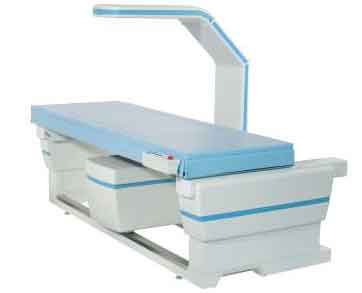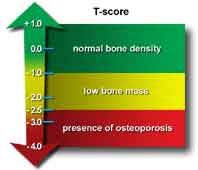6th June 2024, NIA Diagnostic Imaging
DEXA (Dual-Energy X-ray Absorptiometry), is a non-invasive, quick and simple medical imaging modality used to measure bone mineral density (BMD). It is highly effective in diagnosing osteoporosis or osteopenia, hence enabling managing clinicians to assess the extent of bone loss for their patients. It is considered the “gold standard” by the World Health Organisation (WHO) and is the most accurate and inexpensive test to diagnose osteoporosis. Additionally, results from the scan (T-score and Z-score) can provide vital information to assess fracture risk and optimise treatment outcomes for patients, thus increasing their quality of life. This is vital for high-risk individuals such as; the elderly population, postmenopausal women, those with family history and those who have predisposing medical conditions like rheumatoid arthritis or hyperthyroidism.
At NIA Diagnostic Imaging Ingleburn, DEXA is readily available and Bulk-billed for patients who meet Medicare eligibility. No appointment is necessary for patients, they are welcome to walk-in, with all referrals being accepted. Our machine is quick, simple and very powerful – being powered by Hologic® the global pioneer in bone heath densitometry technology.
How DEXA measures Bone Mineral Density (BMD):
DEXA uses low-dose X-rays to measure the amount of calcium and other minerals in bone, providing bone density information. During a DEXA scan, the patient lies supine on a padded table, with the X-ray tube passing over the body, emitting x-rays. The common sites for measurement are the lumbar spine, hip (femoral neck) and forearm. These regions are chosen for the scan because they are common sties of osteoporotic fractures.
The amount of X-ray energy that passes through the bone and soft tissue are detected by the DEXA machine and based on the differences in absorption between bone and soft tissues, the machine calculates the bone mineral density in the measured region.
DEXA scan results:
T-Score: A T-score compares the patient’s bone density to that of a healthy young adult of the same gender.
- A T-score between +1 and -1 is considered normal.
- A T-score between -1 and -2.5 indicates low bone density or osteopenia.
- A T-score of -2.5 or lower indicates osteoporosis.
Z-Score: The Z-score compares the patient’s bone density to that of individuals of the same age, gender, and body size. A Z-score below -2 indicates that your bone density is lower than it should be for someone of your age.
Based on the T-score or Z-score results, osteoporosis diagnosis can be made, and the patient’s fracture risk can also be assessed. This crucial information is vital for healthcare providers to develop appropriate management plans for individuals at risk of osteoporosis or monitoring the effectiveness of treatment for those already diagnosed with the condition. DEXA scans are also a great screening tool for osteoporosis as they can detect early changes in bone density prior to the occurrence of symptoms, thus allowing for early intervention and implementation of early treatment measures.
Considering all of these factors, many individuals would greatly benefit from a DEXA scan because aging is a major risk factor for osteoporosis.
At NIA Diagnostic Imaging our highly trained staff members are committed and passionate in delivering premium care to our patients whilst being quick and efficient. We acknowledge the importance of early diagnosis of osteoporosis and aim to ensure improved quality of life for all our patients.
References:
- Cleveland Clinic. (2020, December 12). DEXA (DXA) Scan: Bone Density Test. https://my.clevelandclinic.org/health/diagnostics/10683-dexa-dxa-scan-bone-density-test
- Johns Hopkins Medicine. (2024). Bone Densitometry. https://www.hopkinsmedicine.org/health/treatment-tests-and-therapies/bone-densitometry#:~:text=For%20various%20reasons%2C%20the%20DEXA,to%20break%20or%20fracture%20easily.
- RadiolofyInfo.org. (2024, March 11). Bone Density Scan (DEXA or DXA). https://www.radiologyinfo.org/en/info/dexa#:~:text=Bone%20density%20scanning%2C%20also%20called,diagnose%20and%20treat%20medical%20conditions.
- Centers for Disease Control and Prevention. (2021, October 20). Radiation in Healthcare: Bone Density (DEXA Scan). https://www.cdc.gov/nceh/radiation/dexa-scan.html#:~:text=DEXA%20(dual%20x%2Dray%20absorptiometry,the%20hip%20and%20the%20spine.
- NHS. (2022, October 5). How is it performed-Bone density scan (DEXA scan). https://www.nhs.uk/conditions/dexa-scan/what-happens/
- NIA diagnostic imaging. (2022). DEXA (Bone Density Scan). https://niaimaging.com.au/dexa/
- Hologic. (2022). The future of DXA. https://car-asm.ca/wp-content/uploads/2022/02/Brochure-Horizon-DXA-PB-00238-CAN-EN-Rev001.pdf



